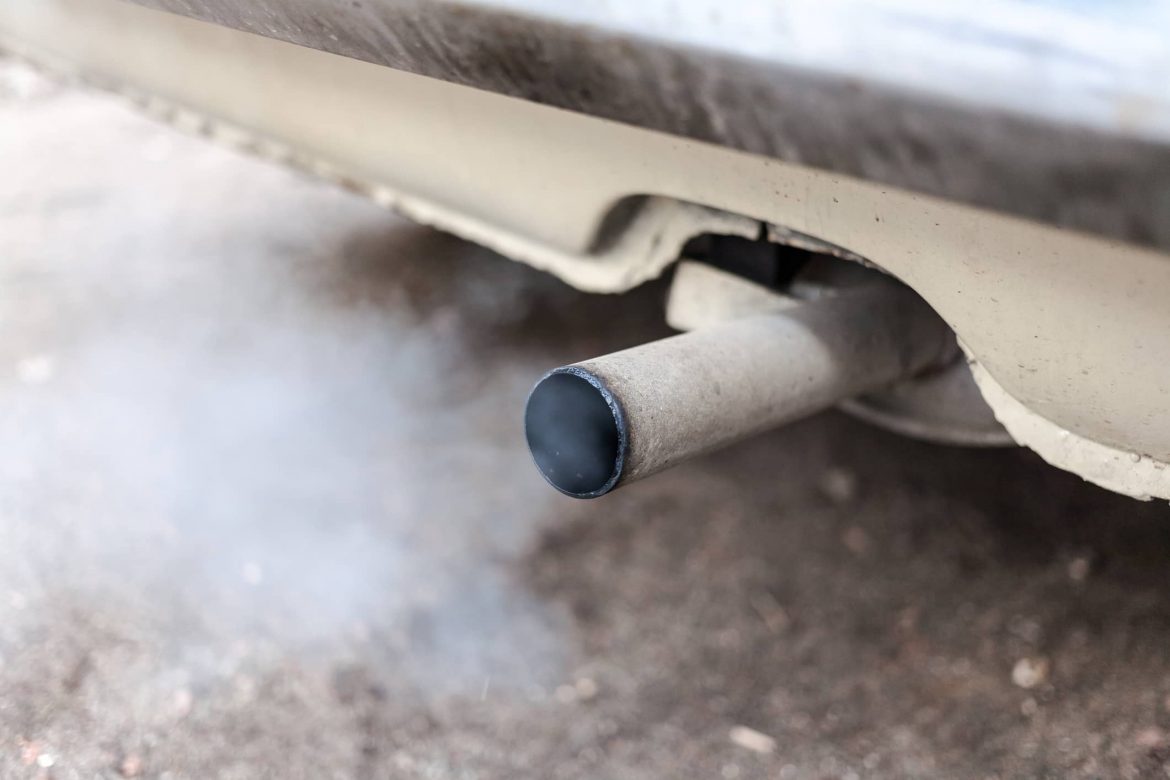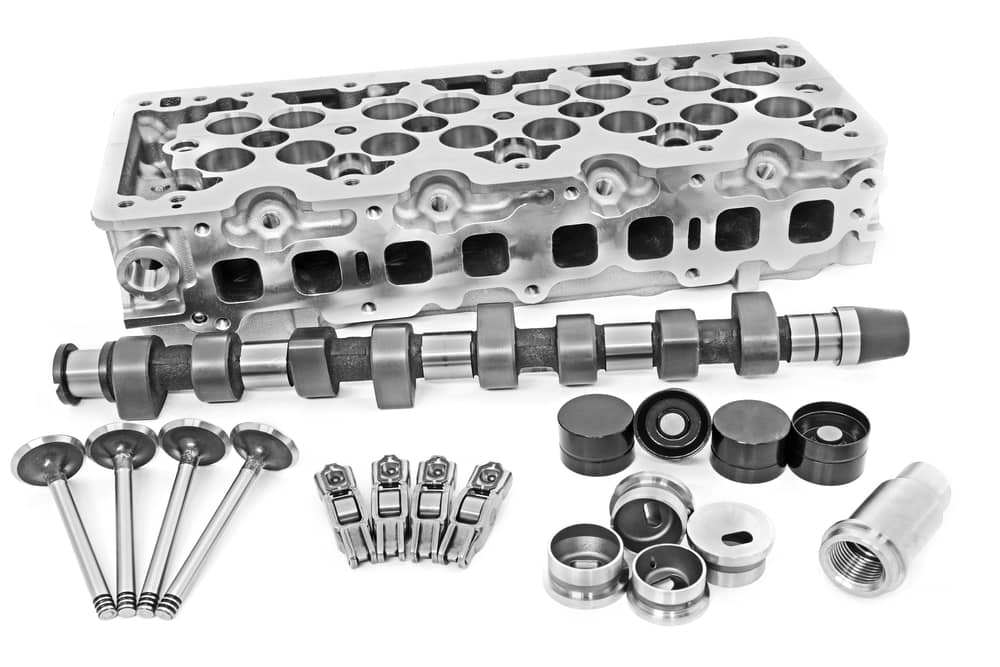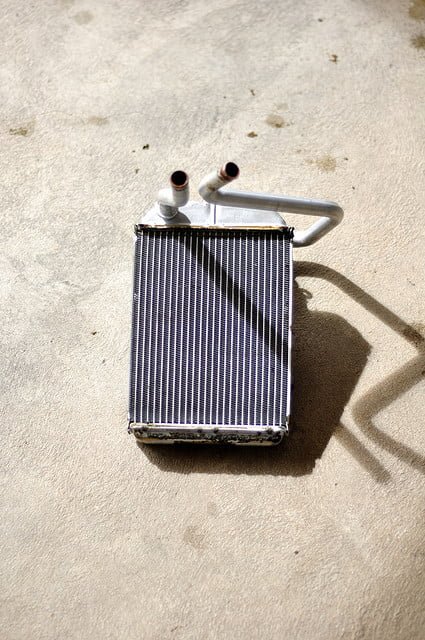 If you’ve got a transmission leak, then you’ve got a big problem. Besides an oil leak, a transmission leak is the most dangerous leak for your vehicle as it can quickly lead to expensive problems. Even worse, there won’t be any indication that you’ve got a low fluid level in your transmission. Most vehicles have an oil pressure gauge to let you know your engine lubrication system is working properly, but the transmission in your vehicle doesn’t have a gauge or warning light to let you know there is a problem. If you have a transmission leak and don’t catch it early, the first sign that you’ve got a problem will probably be erratic or hard shifting. At this point, you may have already done permeant damage to your transmission.
If you’ve got a transmission leak, then you’ve got a big problem. Besides an oil leak, a transmission leak is the most dangerous leak for your vehicle as it can quickly lead to expensive problems. Even worse, there won’t be any indication that you’ve got a low fluid level in your transmission. Most vehicles have an oil pressure gauge to let you know your engine lubrication system is working properly, but the transmission in your vehicle doesn’t have a gauge or warning light to let you know there is a problem. If you have a transmission leak and don’t catch it early, the first sign that you’ve got a problem will probably be erratic or hard shifting. At this point, you may have already done permeant damage to your transmission.
Catching a transmission leak early is imperative to the health of your transmission. The best and most effective way of catching a transmission leak is to regularly check your transmission fluid level. Many vehicles have a dip stick, much like your engine oil dipstick, you can use it to check your transmission fluid level. The difference is that your transmission fluid level needs to be checked while your engine is running and is most accurate if your vehicle is warm, for example, after a 20 to 30 minute drive.
If your transmission isn’t equipped with a dipstick or checking under the hood regularly isn’t something you’re comfortable with, then the alternative is to check for puddles or stains in regular parking spots. Whether it’s in your driveway or in the same spot at work every day, checking where you park regularly for signs of a transmission leak is the next best method for checking for a leak.
The most likely source of a transmission fluid leak is at one of the outputs. On a front wheel drive car, this will be where one of the CV axles connect. In a rear wheel drive vehicle, this will be where the driveshaft connects to the transmission. The seals at these locations are subject to the most movement and outside abrasion from road grime so they will often fail first. Since the bearing on the other side of that seal is constantly being lubricated with transmission fluid, fluid will leak out of a failed shaft seal as long as you are driving so the best time to check for evidence of a leak is right after you’ve parked your vehicle.
Replacing these seals on your transmission can be a tedious job depending on their location and the equipment you have to remove to get to them. Fortunately, replacing the seals isn’t the only way to stop a transmission leak. Adding BlueDevil Transmission Sealer to your transmission fluid is a quick and easy way to seal a leak in your transmission. If the seals in your transmission are leaking, it’s often because they are dried, cracked or shrunken rather than actually destroyed. BlueDevil Transmission Sealer is designed to revitalize and restore your old seals to their original shape and size allowing them to continue sealing the transmission fluid stopping your leak and keeping your transmission safe!
For more information about BlueDevil Transmission Sealer, click on the banner below!

You can purchase BlueDevil Transmission Sealer at any of our partnering local auto parts stores like:
- AutoZone
- Advance Auto Parts
- Bennett Auto Supply
- CarQuest Auto parts
- NAPA Auto Parts
- O’Reilly Auto Parts
- Pep Boys
- Fast Track
- Bumper to Bumper Auto Parts Specialists
- S&E Quick Lube Distributer
- DYK Automotive
- Fisher Auto Parts stores
- Auto Plus Auto Parts stores
- Hovis Auto & Truck Supply stores
- Salvo Auto Parts
- Advantage Auto Stores
- Genuine Auto Parts stores
- Bond Auto Parts stores
- Tidewater Fleet Supply
- Bumper to Bumper Auto Parts
- Any Part Auto Parts
- Consumer Auto Parts
Pictures Provided By:
transmission_leak.jpg – By Chat9780 – Licensed By Getty Images – Original Link
BlueDevil Products can be found on Amazon.com or at AutoZone, Advance Auto Parts, O’Reilly Auto Parts, NAPA, and other major auto parts retailers.
9 responses to "Stopping a Transmission Leak"
9 Comments
Leave a Reply
Related Articles




This blog post is helpful when it comes to stopping a transmission leak. We at Active Green + Ross Complete Tire & Auto Centre understand how tricky it can be, but it’s also extremely important.
My sienna 1999 model is having a leak under the car and have replace the seal and torque converter seal. There is still leak on my car l. Pls assist me what can I do?
Mr. Lekan-
We recommend applying the proper amount of BlueDevil Transmission Sealer. You should add 1 ounce of BlueDevil per every 1 quart of fluid capacity.
Thank you!
-BDP
I have a Toyota Corolla 1999 with a torque converter seal leak does this product will work!
Luis-
Yes, the BlueDevil Transmission Sealer (https://store.gobdp.com/transmission-sealer-00236/) is safe and compatible to use for the torque converter seal leak on your Toyota Camry. You will be using one oz. of the product per quart of fluid in the system.
Thank you!
-BDP
What if it’s leaking like you forgot to turn your faucet off will this work or would I need a whole new trans pan
Jack-
Unfortunately, the BlueDevil Transmission Sealer is not recommended for the type of leak you have described. It is intended more for a leak that is seeping or lightly dripping. If you are losing fluid too quickly, you would lose the product just as quickly, and wouldn’t be able to keep it in the system long enough in order to get the benefit of using it. A hard part repair may be your best option.
Thank you!
-BDP
I have a 2nd generation transmission on my 2013 Cadallic CTS. Should this product work on this type of transmission?
Steve-
Thank you for asking about your Cadillac CTS. The BlueDevil Transmission Sealer would be safe and compatible for the type of leak you have described. You will be adding one oz. of the product per quart of fluid in the system, and should expect to see results after approximately 100-200 miles of driving.
Thank you!
-BDP